|
Pot Roasts
Cuts from the chuck are among the most popular cuts for pot-roasting (braising). They have plenty of connective tissues that melt when the meat is pot-roasted making it tender and flavorful. Beef cuts from the round and brisket are also used. Cuts used for pot roast benefit from the moist heat of pot-roasting, which helps to tenderize the meat. |
|
Boneless Chuck Eye Roast
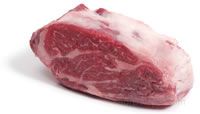
|
The chuck eye is a continuation of the rib-eye meat. It is similar to the rib-eye meat of the rib primal (ribs 6-12) except that it is located in the chuck primal (ribs 1-5). The chuck eye is also not as tender as the rib-eye meat, but it is still one of the most tender of the chuck roasts. The chuck eye roast is usually braised, but it can also be oven roasted if it is not overcooked. Alternate names for the chuck eye roast include:
- Boneless Chuck Fillet
- Boneless Chuck Roll
- Chuck Tender
- Scotch Tender
|
|
Top Blade Roast

|
The top blade is located above the shoulder blade and is known as the top blade roast. Although it is usually braised, it is tender enough to be oven roasted if it is not overcooked. Other names for the top blade roast include:
- Flatiron Roast
- Top Chuck Roast
- Blade Roast
- Chuck Roast First Cut
- Lifter Roast
- Triangle Roast
|
|
Mock Tender Roast

|
The mock tender is often sold as a roast and is a cone shaped muscle next to the top blade in the chuck primal. The name "mock tender" is misleading because the meat isn't very tender and is best when it is braised. Alternate names for the mock tender roast include:
- Medallion Pot Roast
- Fish Muscle
- Fillet Roast
|
|
Under Blade Roast
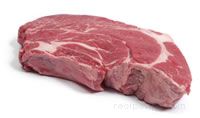
|
The under blade is directly below the shoulder blade and is sold as the boneless under blade roast or under blade steaks. It is also known by the following names:
- Bottom Chuck Roast
- California Roast
- Inside Chuck Roast
- Boneless Roast Bottom Chuck
|
|
7-Bone Roast
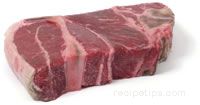
|
The 7-bone roast is a cross cut roast of the shoulder blade. It gets its name from the cross cut of bone that is shaped like a "7". The 7-bone roast is one of the most popular for pot-roasting. It is also known by the following names:
- Center Cut Pot Roast
- Chuck Roast Center Cut
|
|
Arm Roast

|
The arm roast is one of the most popular pot roasts. It can be reduced to a smaller cut known as an arm steak, which is also known as Swiss steak. The arm roast is also called:
- Arm Pot Roast
- Arm Chuck Roast
- Round Bone Pot Roast
|
|
Boneless Shoulder Roast
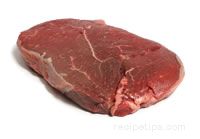
|
The boneless shoulder roast is also know as the English roast and is located behind the arm roast. |
|
Cross-rib Roast
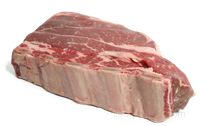
|
A cross-rib roast contains the meaty portions on the top of ribs 3 through 5. The best results occur when it is pot-roasted. The cross-rib roast is also known by the following names:
- Boston Cut
- English Cut
- Bread and Butter Cut
- Shoulder Clod
|
|
Neck Pot Roast
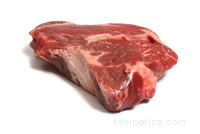
|
The meat is obtained from the seven neck vertebrae. Stew meat is also cut from this area. |
|
Bottom Round Roast
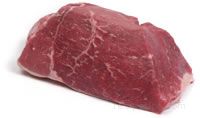
|
The bottom round is the outside muscle of the upper leg. The bottom round roast can be used as an oven roast if it is of the best quality, but it can become very tough and chewy if it is roasted too long. The best results occur when the meat is pot-roasted, which helps to tenderize it the meat. |
|
Boneless Rump Roast
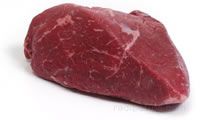
|
A boneless rump roast is sometimes sold as is or it may be rolled and tied before it is packaged and sold. |
|
Standing Rump Roast
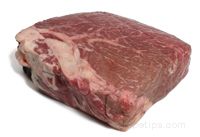
|
The name, "standing rump roast" refers to a rump roast in which the bone has not been removed. It is also known as a bone-in rump roast. It is very flavorful and tender when pot-roasted. |
|
Eye Round Roast
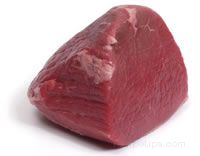
|
The eye round is the eye muscle of the bottom round. The eye round roast is boneless and can be a bit tough, so it is best to cook it with a moist heat process such as pot-roasting. |
|
Top Round Roast
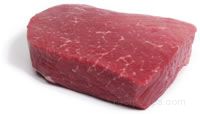
|
The top round roast is obtained from the top round muscle. It is one of the better cuts from the round primal in terms of flavor. Pot-roasting is still the recommended cooking method for a top round roast, because it can be a bit chewy if cooked with dry heat methods. |
|
Round Tip Roast
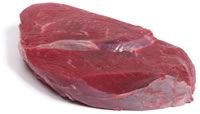
|
The round tip is next to the sirloin tri-tip so it is a bit more tender than other round roasts. It may be oven roasted if it is of top quality and it is often cut into pieces for use as kabob meat. |
|
Brisket
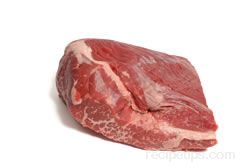
Point Cut
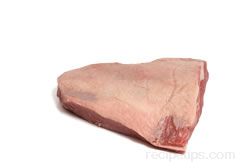
Flat Cut |
The brisket is located between the fore shank and the plate. It is usually sold boneless and it is flavorful, but tough. Pot-roasting helps to make the meat more tender.
A full brisket may weigh 10 pounds or more, so it is usually cut into two sections. The front half is known as the point cut, thick cut, or deckle. The back half is known as the flat cut, thin cut, or brisket-deckle-off and is more commonly found in food stores than the front half. It is also a common practice for food stores to cut both halves of the brisket into several portions and offer them as smaller roasts.
The flat cut is lean, but it has a layer of fat on the surface while the point cut contains more internal fat than the flat cut. The fat helps to moisten the meat when the cuts are pot roasted. |

